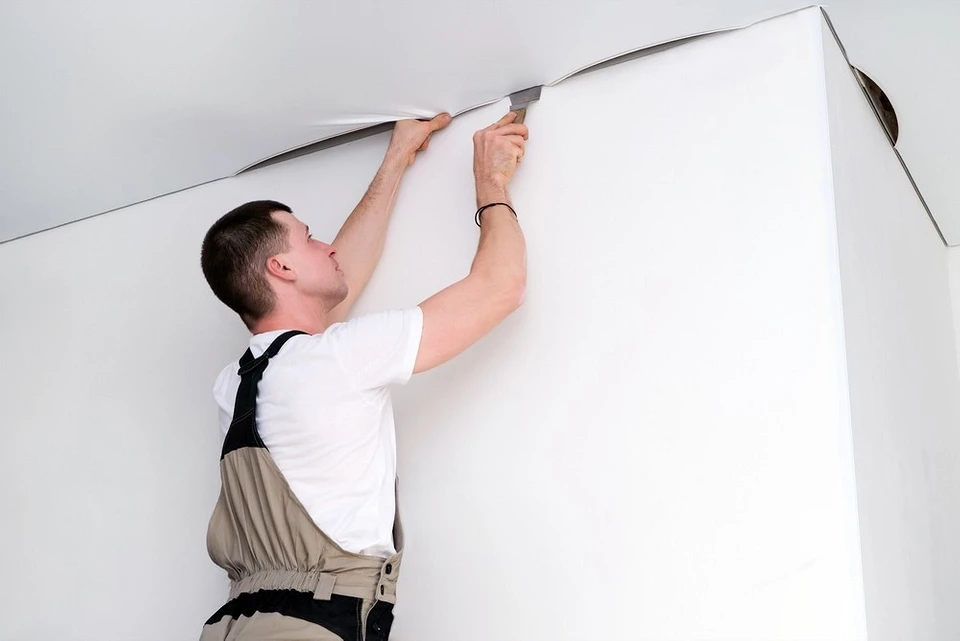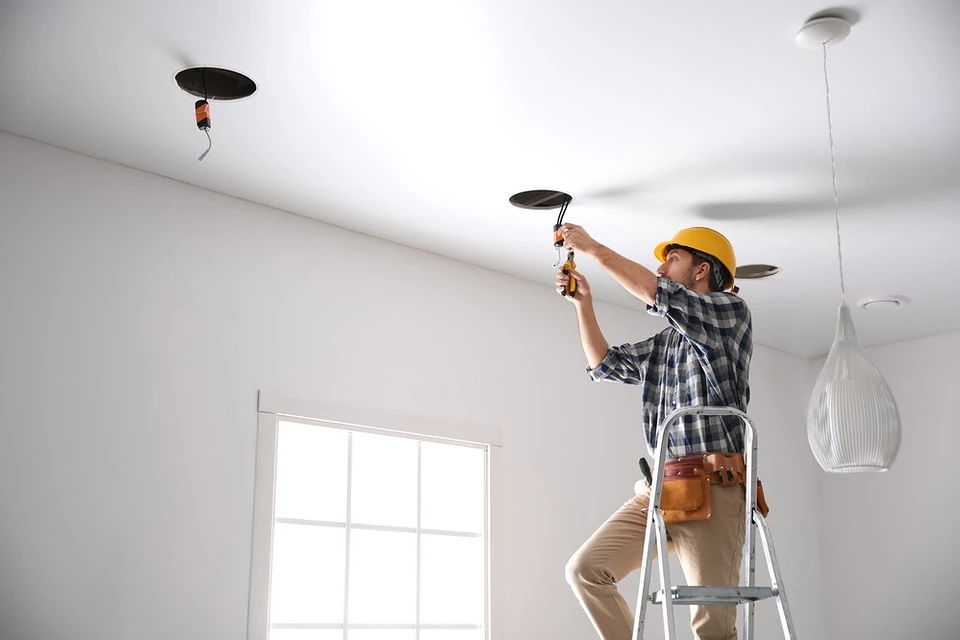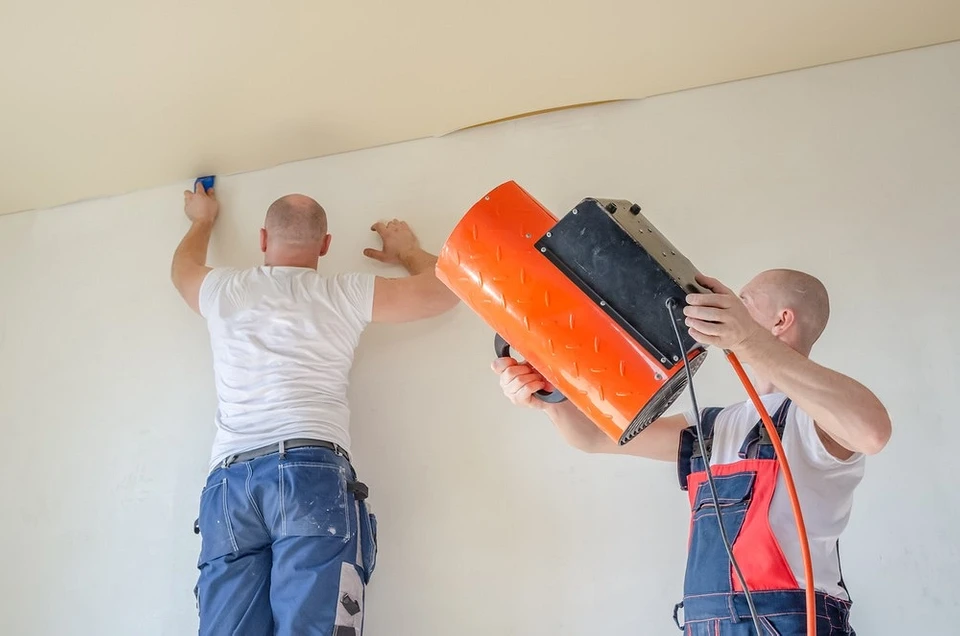What kind of fastening is used, at what stage of the building to make the ceiling, how to prepare the base and correctly place an order from the company. We talk about it in the article.
Stretch Ceiling systems are considered one of the fastest and most effective ways to finish a ceiling. Their advantages include long service life, reasonable cost, attractive appearance, and quick installation. Installing them yourself is impossible. Only specialists can do this. Unfortunately, they do not always do the job correctly, so the customer needs to have installation information. Let’s figure out what you need to know before installing a stretch ceiling and how to check its quality after the work is completed.
Features of fastening stretch systems
Maintainability, durability, and aesthetics of the structure depend on the type of fastening. Three options are most often used. Let us briefly describe them.
Harpoon
A hook-shaped edging, called a harpoon, is welded along the edge of the canvas. During installation, the harpoon is snapped into baguette guides fixed to the walls. A gap forms between the ceiling surface and the wall. It is subsequently covered with a special overlay. The advantages of harpoon fastening are its low price and the ability to dismantle the canvas and then reinstall it. A significant drawback is the difficulty of securing curved models. In this way, PVC film of any texture is most often installed.
Wedge-shaped
A special profile is attached to the walls, inside of which there are “spacers” in the form of wedges. The canvas is brought inside the profile, where its edges are fixed. The area where the ceiling surface and the wall meet is covered with a decorative overlay. The main advantage of this method is the small thickness of the profile, which allows for a minimal indentation from the rough ceiling. Disadvantages: weakening of the fastening over time and the inability to dismantle the coating without damage.
Clip-on
It is considered a type of wedge-shaped system. The same profile is used for it, but the shape of the internal “spacer” is different. It allows you to securely fasten the canvas without creating gaps between it and the wall. The clip fastening can only be used for non-stretchy fabrics.
The user needs to know which mounting system will be selected for installation. This determines how much the height of the room will be reduced. If the ceiling is flat, this value will be equal to the height of the mounting profile. In the case of a harpoon, this is 3.5 cm, the height of the wedge-shaped or clip profile is 0.8-1 cm. Considering that there are most often unevennesses, it is necessary to increase these values by 1.5-2 cm. If you plan to install built-in lighting, the ceiling will drop by 8-10 cm due to the installation of lamps.

At what stage of repair is it better to install the structure?
If the apartment is undergoing renovation, it is important to properly plan the installation time of the stretch system. You need to know that the frame of the structure is attached to the walls. That’s why all rough work must be completed before this moment. The base under the floor covering must be laid. The walls are leveled, puttied, and dried.
There are different opinions regarding the finishing of wall surfaces. It needs to be finished if it is tiling or painting. Regarding decorative plaster and wallpaper, there may be different options. If you decorate the wall with them before installing the ceiling structure, there is a risk of damaging or staining the finish during the work. But if you glue wallpaper or apply plaster after installing the hanging system, you can ruin it. Therefore, they do what is more convenient.
An important point: if the frame is attached to an already finished wall, it is advisable to use a hammer drill with a special vacuum cleaner to minimize the amount of dust.
It is better to lay the flooring after installing the ceiling structure. This is especially important when PVC film is used. To stretch it, craftsmen use a heat gun. A sudden increase in temperature can have a negative effect on newly laid flooring. Lacquered wood and some types of laminate are most sensitive to such changes.
If the repair is completed or was done a long time ago, the system can also be installed. You just need to protect the wall and floor decoration as much as possible: remove furniture from the walls and cover it from dust. It is advisable to cover the floor with cardboard or hardboard.

What ceiling preparation is needed before a suspended ceiling?
The canvas stretched over the frame completely covers the rough ceiling with all its defects. No complex preparatory work is required. However, if swollen plaster or deep cracks remain on the base, they can subsequently ruin the new coating. To prevent this from happening, let’s look at what needs to be done before installing suspended ceilings.
- Seal all large cracks with putty or sealant. Otherwise, air flows passing through them will cause sagging or “sticking” of the canvas to the base.
- Remove any blistered putty or paint and clean the breathable joints. If crumbled material falls onto an installed tension system, it will sag or break.
- Prime the base with a suitable antiseptic preparation. This will strengthen the material and prevent fungus from appearing.
Before starting installation work, you need to remove furniture from the room or move it to the center. Cover it with film or cloth. Exposed areas of the floor can be covered with hardboard or cardboard. After this, the room is ready for installation.

What you need to know when ordering a stretch ceiling
The installation company will independently cut, prepare for installation, deliver, and install the stretch system. When placing an order, the manager will also help you choose the best option, taking into account actual conditions and interior design. However, the customer needs to determine a number of important parameters.
- Canvas material. It can be fabric or PVC film.
- Texture. The film can be satin, matte, glossy, or textured.
- Colors. There are a minimum number of color options for fabrics, most of them for glossy PVC film.
- Design. There may be one, two, or more levels of different configurations. Multi-level systems are made only from film material.
- Type of lighting. This can be built-in lighting, spot lighting, one or more lamps, etc.
- Additional finishing in the form of a 3D ceiling, “floating” surface, etc.
All these points must be included in the contract. In addition, you need to discuss the factors that complicate the work. If they are present, installation will cost more than in the standard case. Let’s list what is considered a complicating factor.
- Arrangement of a secret niche for curtains.
- Pipe bypass.
- Installation of built-in lamps.
- Arrangement of mortgages for lighting fixtures or cornices.
- The height of the room is more than 280 cm.
- Working in inconvenient places: above a shower stall, above a closet, or other furniture, etc.
Complicating factors include the complex configuration of the room. Thus, the payment for installing a stretch system in a standard room usually includes processing the four corners and arranging a hole for a chandelier. If more corners or holes for lamps are needed, this is also paid separately.

How does the installation work?
Installation work is carried out by the installation company. Everything happens in this order.
- Marking walls with a laser level.
- Fastening profiles around the perimeter of the room.
- Laying electrical or other communications, if necessary. Fixing mortgages for lamps or cornices.
- Stretching the material. For PVC film you will need to heat it with a heat gun; for fabric, this is not necessary.
- Fastening recessed lighting fixtures.
- Fixing decorative strips that close the gap at the joints of the ceiling covering and the wall.

How to accept finished work
The quality of the tension structure can be checked immediately upon completion of the work. Let’s list what you need to pay attention to.
- The material should be evenly tensioned, without sagging, creases, or cracks.
- The surface is strictly horizontal, without distortions.
- There should be no abrasions, traces of dirt, cuts, or distortion of the structure on the coating.
- Lighting fixtures must operate normally and be installed in the locations specified in the design project.
- Seams, if any, are barely noticeable and do not come apart.
- There should be no gap between the stretched canvas and the chandelier.
- There should be no gaps between the wall fastenings and the tensioned material.
- And damage to furniture, wall, and floor finishes too.
If the customer is satisfied with everything, he signs the acceptance certificate and pays for the work. If deficiencies are detected, a period is set during which they will be eliminated. In difficult cases, it will be necessary to completely or partially replace the ceiling structure. If the contractor refuses to correct the defects or unreasonably delays their elimination, it is better to terminate the contract with him and choose another installer company.
Read more: Quick Guide: 3 Ways to Level Your Walls



